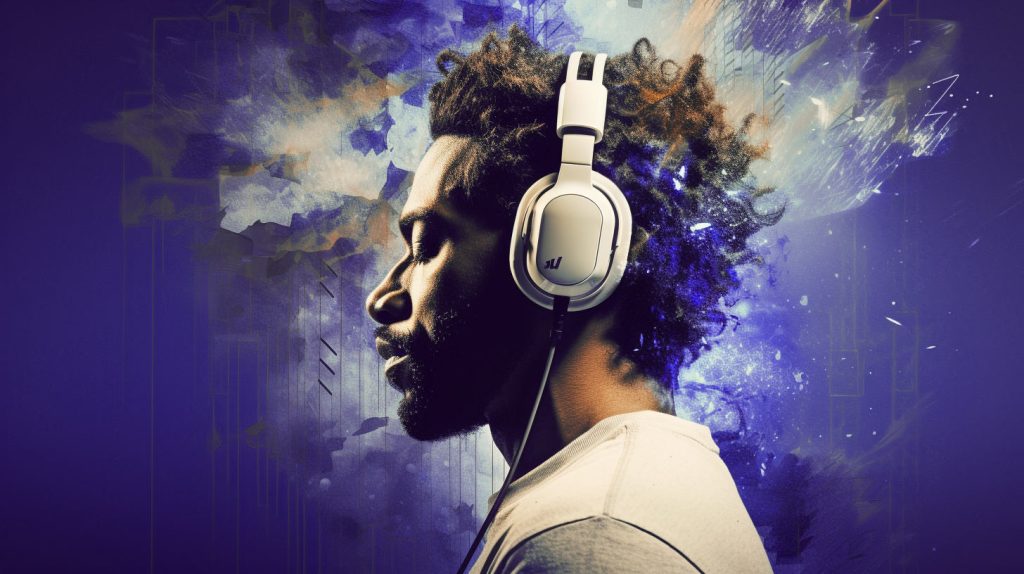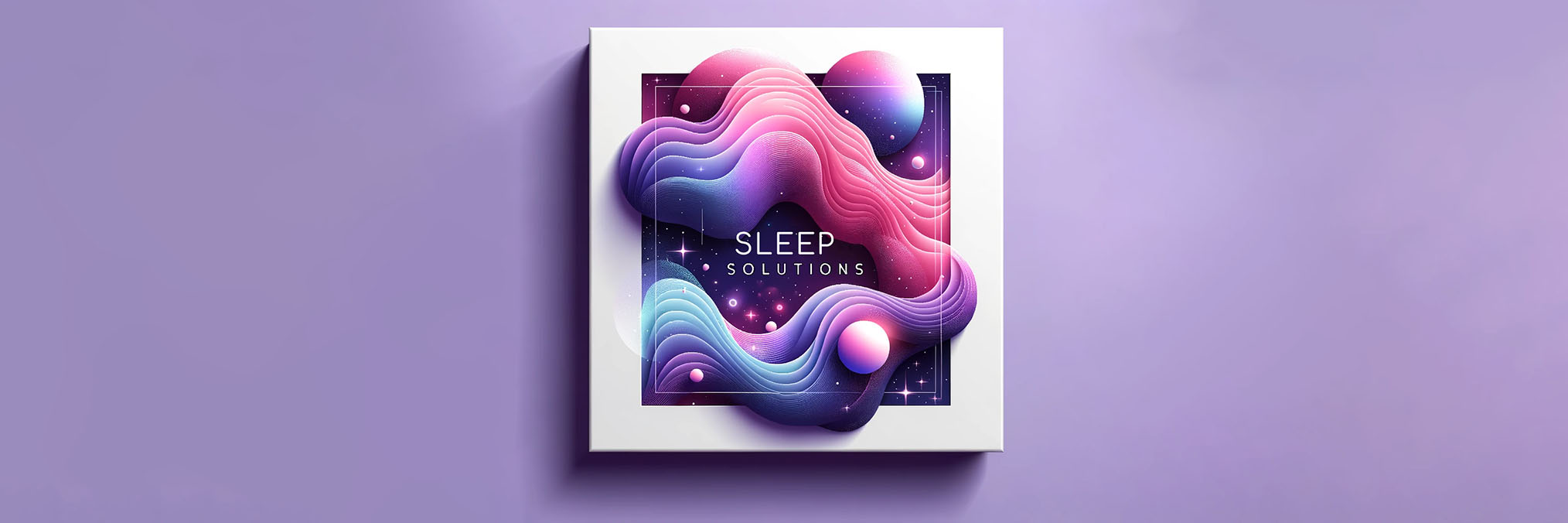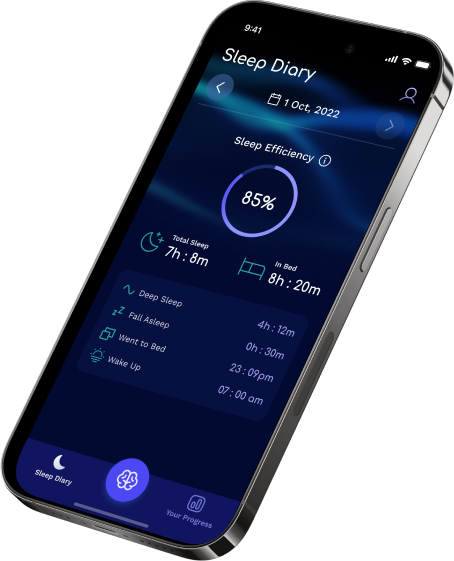
Modern life means living in a fast-paced, technological world that is always connected and online. As a result – you might have noticed – everyone is nowadays very dependent on their electronic devices, whether it’s for business or entertainment.
However, we know that technology influences our sleep patterns, which can have a very real impact on our well-being and overall life.
In this article, we’ll look at technology’s effects on sleep. However, we want to avoid demonizing it, and instead, we will also offer practical tips for harnessing technology to improve our rest. Let’s get started.
🔎 Feel free to jump to your preferred section in this article:
1. How Technology Affects Sleep Positively and Negatively
2. How Technology Affects Sleep Patterns
3. Dealing With Sleep Disorders Caused by Technology
4. Take Advantage of Sleep Technology
1. How Technology Affects Sleep Positively and Negatively
Technology has the potential to be both beneficial and harmful.
Some of its benefits are making communication possible for people across the globe, increasing our productivity, and providing access to information for everyone.
In the narrower field of sleep, it can also bring many benefits like helping track our sleep, encouraging better sleep hygiene, and providing relaxation techniques.
On the other hand, that same technology that has improved our lives so much in some cases, can also interfere with our ability to have a good night’s sleep.
The solution to this problem requires two steps:
1. Education – understanding how technology affects your sleep.
2. Action – what exactly can you do to solve this issue?
If you take these two steps seriously, you can find a good balance between relying too much on technology, and the need for having a good night of sleep.
2. How Technology Affects Sleep Patterns
Let’s examine the different ways technology can affect our sleep.
2.1 Blue Light Exposure – A Possible Cause
By default, the screens of electronic devices emit bright light and contain a significant amount of blue spectral content, which resembles the light we receive from the Sun (kind of).
2.1.1 Hypothalamus and Melatonin
The reason it is believed that blue, bright light impacts our sleep is related to the hypothalamus, which is sensitive to sunlight.
As it gets dark outside, the hypothalamus will signal the pineal gland to start producing melatonin, which is a hormone that makes you feel sleepy.
It is hypothesized that exposure to artificial light that resembles the Sun’s natural light can suppress this secretion of melatonin, reducing sleepiness and increasing alertness. As you may imagine, this is not how you want to feel at night, when you’re preparing to get to sleep.
2.2 Social and Other Digital Media – A Definite Cause
While not everyone is convinced that blue lights are that big of a deal when it comes to sleep disruption, it is a bit harder to deny – because it is so evident in our own lives – the fact that social media, accessible digital entertainment overall, and even work-related digital tools can easily lead to sleep disruption.
There are two main reasons.
2.2.1 Emotional Arousal
Social media platforms are powered by algorithms engineered to increase engagement. Increased engagement means users spend more time using the platforms while being exposed to ads, which are the platforms’ source of revenue.
So, to increase engagement, it’s likely that exciting, interesting, divisive, or outraging content will be shown to you (instead of boring content), which is more likely to elicit emotional arousal. That is the opposite state of mind you want to be in when trying to go to sleep.
But even worse than passively consuming content is actively engaging in it, either by posting something yourself, or engaging in a conversation or argument with someone else. We are social creatures, so we care about what other people think, whether we like to admit it or not. Consequently, we will likely become emotionally aroused after active engagements, disrupting our sleep.
However, it is not just social media that can cause emotional or cognitive arousal in you. Getting a work-related email at 9:30 p.m. probably does the same, or worse. The reasons, as you know, are not related to algorithms, but nevertheless, they will still throw a rock into what should otherwise be the tranquil waters of your evening.
2.2.2 Going Past Bedtime
The second reason is the amount of time all these activities take away from us. We tell ourselves we’ll check the phone just one more time, and before you know it, three hours have passed. Or we start by saying we’ll watch one more episode of our favorite show (in an age where all episodes are available on demand), and end up thinking halfway that maybe we can try finishing the whole season.
Dopamine plays a role in our desire to continue scrolling through social media feeds or binge-watching shows. It creates a sense of instant gratification, making it difficult to resist the urge to stay up late.
Similarly, getting a work-related email late at night can easily make us tizzy trying to finish the task, probably taking us to a point way beyond our bedtime.
3. Dealing With Sleep Disorders Caused by Technology
Now that you understand the effects of technology on sleep, we can move on to the solutions.
3.1 Digital Curfew
Suppose you have determined that technology brings absolute chaos to your sleep routine and that you have no control over it. In that case, you can try the most extreme solution to the technology problem — a digital curfew. This means establishing a designated time each evening when you stop using electronic devices.
3.2 Be Selective About The Content You Engage With
If you don’t think technology is impacting you that much, then you can still use it, but you should take precautions not to engage with certain content.
3.2.1 Long-Format or Binge-Watchable Content
Consuming long-format or binge-watchable content before bedtime — like podcasts, TV shows, YouTube documentaries, films, and more -— can make you less prone to respect your typical bedtime.
A possible solution is to watch this content earlier, even if you have to do it while you cook dinner or are walking on the treadmill at the gym.
If necessary, use a bedtime alarm clock to remind you the time to go to bed is approaching, but this will require discipline to stop watching in the middle of the show.
3.2.2 Checking Social Media
Using Social Media passively before bed may or may not be problematic.
The most important rule is that you should be very selective about the type of content that you allow on your timeline. You should have a zero-tolerance policy for divisive or outrageous content. This is not just a sleeping tip, but rather a life tip.
My most used buttons on 𝕏?
- The Mute button
- The Not Interested in this Post button


There is an infinite number of accounts there. Why should I tolerate, in my timeline, those who bring my mood down instead of uplifting it? Use the algorithm to your advantage for once and teach it what you want to see.
3.2.3 Don’t Post on Social Media
Passively scrolling through your feed may not be problematic for you, but actively creating or engaging with content is more risky behavior. Once you engage, you will be struggling with urges to check for notifications, likes, and comments on the things you posted. This will definitely happen if you engage in a heated online argument, but even mundane interactions can have an impact.
So play it safe, and become anti-social during the evenings 🙂
3.2.4 Funny Videos
Did you know that laughter in the evening can induce better sleep?x This means that funny videos are a good bet if you choose some content to watch. Just make sure you don’t binge-watch.
And leave a comment with the funniest YouTube channel you’ve come across lately 👇
3.2.5 Don’t Check Your Email
You should avoid all work-related notifications once you’re home in the evening. You may need to take steps to achieve this successfully, such as communicating to your colleagues and supervisors that you won’t be available to respond during your off-hours.
You should also disable work-related notifications on your phone when you get home or get a phone exclusively for work.
📢 Enjoying this article so far? Don’t miss the next one — you can subscribe to the newsletter, follow us on your favorite social media, or even join us for a real-time chat on Discord
3.3 Blue Light Filters
While not everyone is convinced that blue light from your devices is disruptive, I still think you should take the appropriate precautions regarding blue, bright lights at night. Even if it has no impact on sleep, at least you’ll benefit from reduced eyestrain (this benefit is hardly debatable once you’ve tried it).
Many smartphones, tablets, and laptops offer built-in settings to reduce blue light emissions. You can install free software like f.lux if you’re on a desktop.
If you’re not sure if blue light impacts your sleep or not, you can always try the best approach – try it, and reach your own conclusions! Remove blue light exposure at night, and see how it impacts your sleep. If the results seem apparent, that’s all you need to know.
4. Take Advantage of Sleep Technology
While it’s essential to be mindful of technology’s potential negative effects on sleep, it’s worth noting that certain devices can help improve it.
We know this because we develop sleep technology here at Drowzee Analytics, and we see people getting results every day.
4.1 Pendulum App – Neurofeedback for Insomnia
Through our Pendulum app and headband, you can improve your sleep through a technique known as Neurofeedback for Insomnia:
- You put on an EEG headband that reads your brainwaves and connect the device to our app.
- You listen to relaxing soundscapes.
- Whenever your brainwaves enter a sleep-supportive state, a reward sound is played, letting you know you are on the right path.
- You receive a score for every session you do — giving you an objective metric that allows you to track your progress.
- Through this positive reinforcement training, you will develop, over time, the ability to recall, at will, sleep-inducing states that allow you to fall asleep more easily.
4.2 LucidLink – Digital Sleep Diary
Our other solutions involve using LucidLink, a sleep diary app, to track your sleep, mood, and habits.
- When you track those metrics for long enough, certain correlations start to emerge, showing you which habits result in better sleep and which ones result in worse sleep.
- Access to this information allows you to make data-driven changes to your lifestyle. The result is better and more efficient sleep.
Personalization stands out as the most significant advantage enabled by technology. All sleep advice you read about might be good advice, on average. But ultimately, it might not be the most effective thing for you.
However, technology allows us to capture specific and detailed data and point to different solutions.
For instance, low sleep efficiency might require a different approach than a short total sleep time or prolonged sleep onset latency. By analyzing these and other parameters, it’s possible to highlight potential problems and guide, ideally, your sleep doctor toward a tailored treatment that is uniquely suited to your needs.
Technology enables personalized interventions based on concrete data, which can significantly improve the effectiveness of treatment.
4.3 Other Technological Solutions
Besides the solutions provided by Drowzee Analytics, there are plenty of other ways technology can help improve your sleep, such as:
- White Noise Machines: Produce noise sounds that mask disruptive noises or tinnitus and help sleep better. We have a very popular Brown Noise track available to listen to for free on YouTube.
- Sleep Tracks: Audio recordings, including nature sounds, binaural beats, guided meditations, calming music, sleep stories, and isochronic tones are known to help many people sleep better.
- Sleep-Inducing Content: As I mentioned previously, funny content helps promote sleep. Similarly, any content you feel is sleep-inducing for whatever reason — maybe it makes you feel calm, relaxed, or bored and uninterested — is also an excellent choice to watch.
- Smart Thermostats: Adjust room temperature for optimal sleep conditions.
- Temperature-regulating Bedding: Tech to cool down or warm up the bed.
- Smart Lighting: Lights that simulate sunset and sunrise can help regulate circadian rhythms.
- Smart Plugs: Automate devices in the bedroom like humidifiers or fans to create an ideal sleep environment.
- Reminder Apps: Apps like LucidLink can notify users when it’s their bedtime, and help them keep consistent with their sleep goals.
This is what technology brings to the table.
Final Thoughts
Technology, especially since the early 2010s, has become an essential component of our daily routines. And it doesn’t seem to be going away soon.
So we don’t have much choice: we need to adapt to our changing environment, preferably in ways conducive to our well-being.
We can do this by negating the aspects of technology we determine are affecting us negatively; and by accepting technology’s potential in improving our lives.
This is our new challenge as human beings. It’s a challenge we all face, and, hopefully, we can try doing it together. That’s what Drowzee aims to achieve. Do you want to join us in this mission?
Until next time,
MN
🌙 If you enjoy sleep-related content, join our community! Subscribe to our newsletter, follow us on your favorite social media, and join us for a real-time chat on Discord ☀

